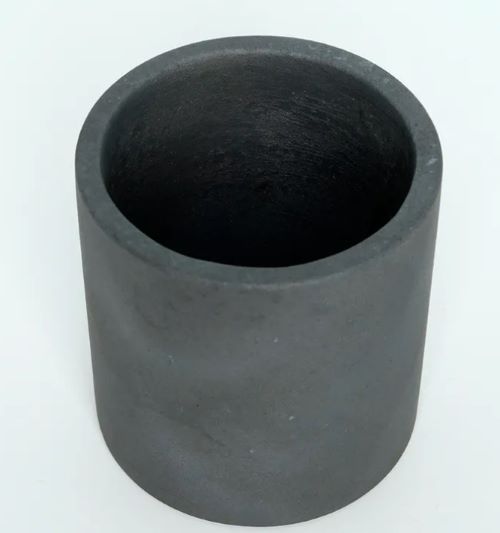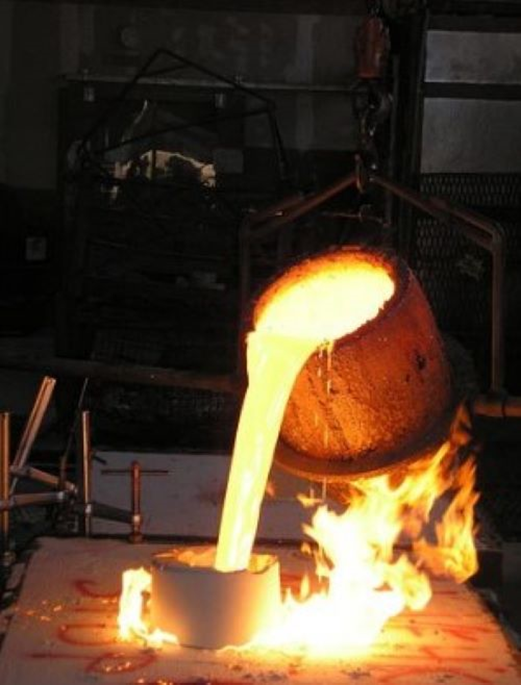Introduction
Crucibles are widely used in metallurgy, chemical processing, and a variety of industries. Among these crucibles, graphite crucibles are useful for the smelting of non-ferrous metals and alloys with their desirable properties. Let’s have a detailed discussion about the features, competitiveness, and uses of graphite crucibles. Hope that you can have a better understanding of graphite crucibles used for metal smelting.
What Are Graphite Crucibles?
Graphite crucibles are containers that can be used in high-temperature environments. They are ideal for melting aluminum, brass, gold, silver, and other non-iron metals because of their thermal conductivity, heat shock resistance, and low reactivity with molten metals.

Figure 1. A Graphite Crucible
Graphite crucibles could be categorized into three types according to their constituent materials. Artificial graphite crucibles use graphite electrode materials. Graphite-clay crucibles are made from natural flake graphite and clay. While the components of graphite-silicon carbide crucibles are natural flake graphite and silicon carbide.
Stanford Advanced Material (SAM) is a supplier of graphite crucibles of different kinds and sizes. Check our website and find the perfect graphite crucibles for your projects.
Properties of Graphite Crucibles
Graphite crucibles stand out for a range of thermal, physical, and chemical properties.
- Thermal Performance: Thanks to their thermal conductivity, the time for melting and energy consumption are reduced. These crucibles could bear rapid heating and cooling since they have excellent heat shock resistance.
- Chemical Stability: Graphite crucibles are rather stable, so they are resistant to corrosion and oxidation. These vessels are even able to delay the corrosion degree. They can also withstand acids and alkaline solutions.
- Non-reactivity: Graphite does not react with other materials. Thus, graphite crucibles do not adhere to the melt or mix with contaminations.
Materials that Can Be Melted in Graphite Crucibles
Different types of graphite crucibles match different metals and alloys.
Graphite-silicon carbide crucibles are suitable for copper-based alloys and aluminum-based alloys due to their thermal shock resistance.
Graphite crucibles are employed for gold and silver melting because they have a small thermal coefficient and strong strain resistance to rapid heating or cooling.
Graphite crucibles are an ideal choice for brass melting because of their durability. It could heat up quickly before the brass metal or alloy oxidizes.

Figure 2. Metal Melting
Why Graphite Crucibles Are Preferred for Melting
Take the case of gold melting. Graphite crucibles have the following benefits for metal melting.
- Better Quality: They provide products with a smoother surface finish. Stanford Advanced Materials would guarantee their quality as well.
- More Applicable Materials: Such equipment could be applied to silver, gold, brass, and numerous non-iron metals. It can also satisfy diverse smelting needs
- Superior Fuel Compatibility: Graphite crucibles are fixed for gas, coke, or other types of fuel. So, you don’t have to buy extra crucibles and save lots of budgets.
- Other Advantages: They are environmental-friendly, cost-saving, and long-lasting. They could self-lubricate, which helps you save on the cost of lubricants.
How to Handle Graphite Crucibles Properly?
Please follow the following instructions so that your graphite crucibles maintain a good state.
- Inspect them in the beginning in case there are any abrasions or cracks.
- Do not stack them with each other to avoid cracks or breaks.
- Store these crucibles in dry and clean areas so they can be used for a longer time.
- You can use hydrochloric acid to clean out most compounds. You can employ nitric acid to remove carbon compounds.
- You’d better add flux after metals or alloys are fully molten. If the flux is added when the worked material is solid, the crucible might be damaged.
Related reading: Lab Tips: How to Use and Clean Crucibles?
Conclusion
Graphite crucibles are utilized for the smelting of gold, silver, aluminum, brass, and other metals and alloys because of their impressive thermal performance, chemical stability, and non-reactivity. Stanford Advanced Material offers quality graphite crucibles at reasonable prices. Our crucibles are carefully tackled during storage and transportation. Send us an inquiry if you are interested.





